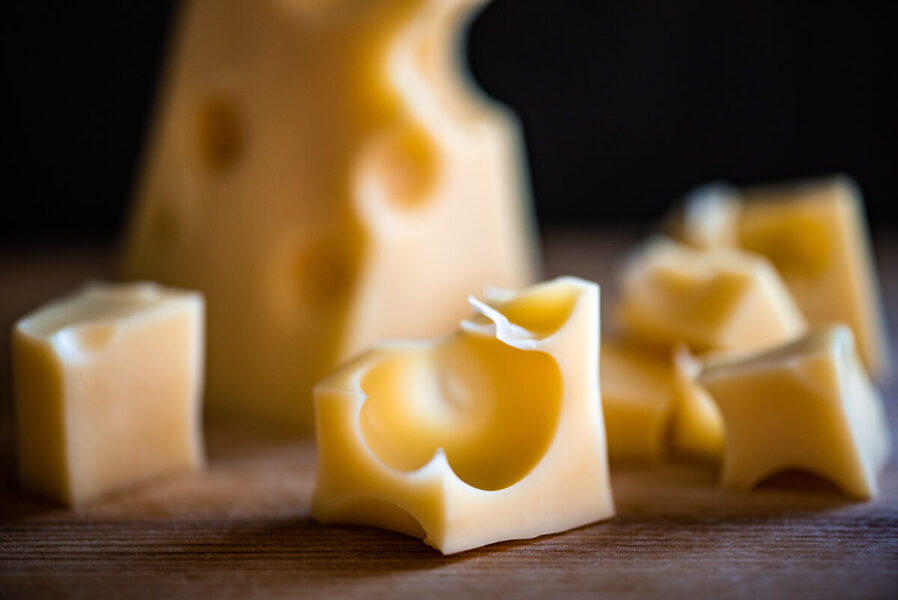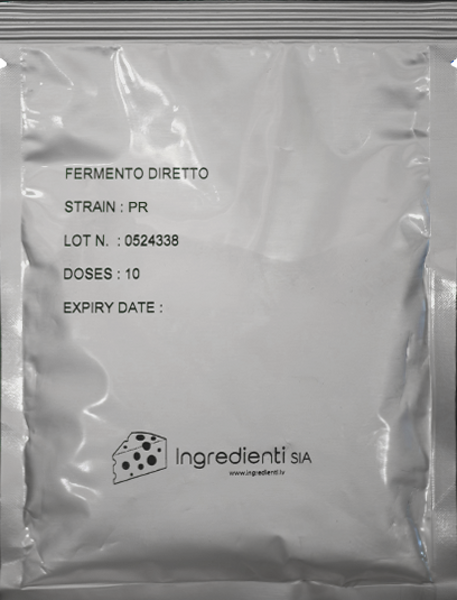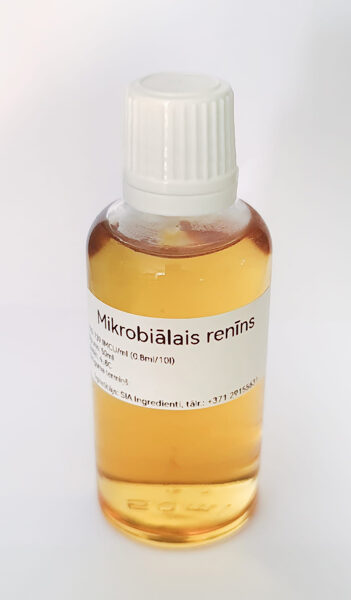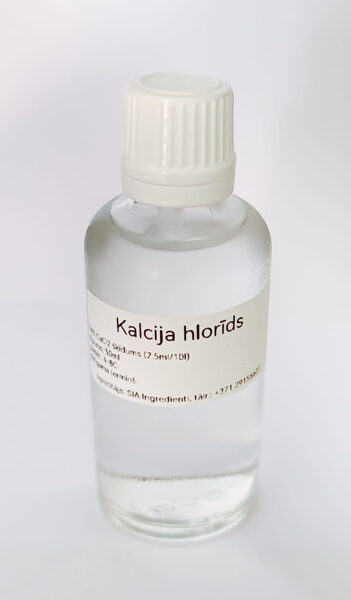Preparing (1h 40min)
- Before starting, we should disinfect all surfaces and dishes that may come into contact with milk.
- Determine whether milk is suitable for making cheese. It has to go through the bactericidal phase (cold milk from the previous day usually works). If you have a PH meter, the PH level of milk should not be outside the PH 6.55–6.75 range (which is very rare).
- Pasteurize milk: heat it to 65 °C and keep it at this temperature for 30 minutes. Can heat up to 70 °C and hold for 15 minutes.
- Quickly cool the milk, for example, in a cold bath to 34 °C (it could take 15 minutes), or heat the already pasteurized milk.
|
Processing (3h)
- Add 0.42 gr. of Lactoferm EM cheese culture.
- Wait 5 minutes and stir the cheese culture into the milk.
- Pour 1 teaspoon of Lactoferm PP cheese culture into 100ml of milk, stir and pour it into the pot.
- Add 2ml of calcium chloride and 1-1.5ml rennet and stir into milk within 60 seconds. Calcium chloride and rennet must first be diluted with 50ml of pure water.**
- After adding a rennet, start the timer to determine the flocculation point. Generally, the flocculation point for most of the cheeses is 3. That means that if the milk has thickened (forms a curd) within 12 minutes, you can move on to the next stage only after 36 minutes (12x3 = 36 minutes).
- Cut the curd into 0.5-1cm cubes, approximately.
- Keep the temperature at 32C and stir gently for 40 minutes.
- Slowly raise the temperature to 49C (1 degree - two minutes)
- Leave for 5 minutes and drain all the whey.
|
Pressing and salting (21h + 5h 40min)
- Put the cheese mass in a mold under a press for 15 minutes (with a weight of 1kg).
- Turn it upside down 3 times during 14.5 hours (after 30 minutes, after 2 hours and after 12 hours, gradually increasing the weight by pressing)
- The salting time is 19 hours approx. in salt solution.***
- After salting, the cheese should be dried with paper towels and put in the refrigerator 10-12C for 1 week, where you need to clean the cheese with a wet cloth in the prepared 5% salt solution.
- After a week, take cheese out of the refrigerator and leave it in the warm place at 20-22C with 85% humidity (at room temperature) and continue to clean the cheese with the same thing every day with a wet cloth. By this time, the cheese should start to swell and become rounder.
- After 2-3 weeks, return the cheese to the cold place (refrigerator) for 3 months with a temperature of 7C, 80% and clean with a wet cloth 3x a week.
|
We look forward to your feedback!
* Freshly milked milk has bactericidal properties for a few hours, during the so-called bactericidal phase, when bacteria suppress reproduction. Cooling the milk prolongs the bactericidal phase. If the milk is obtained in strict compliance with sanitary regulations and rapidly cooled to +40 °C, the duration of the bactericidal phase is 24 hours and more. At the same temperature bactericidal phase period, impure milk has at least two to three times shorter temperature. The duration of the unrefrigerated milk phase is, on average, 2 hours.
(Source: http://www.ezerzeme.lv/lv/zinas/noderigi/5222/par-piena-kvalitati)
** The time of milk coagulation (thickening) depends on the quantity of calcium chloride and rennet. It can be adjusted for best coagulation time, which should ideally be 12 minutes. For instance, if the first time your milk has thickened after 20 minutes, then increase the next dose of enzyme.
*** During pressing, the cheese releases whey and also increases the level of acidity, which is an important regulatory process in bacteria. If you slightly increase this pressing time, then it will be easier to melt the cheese. Such cheese is perfect for hot buns or in pizza making. If the pressing time is too long, it will lose its elasticity and become fragile.





